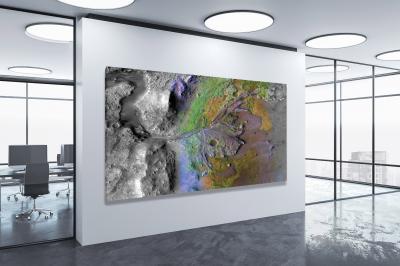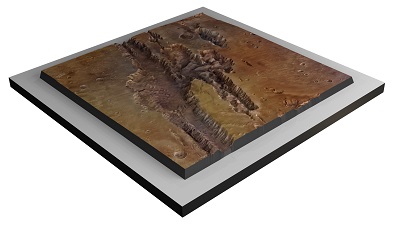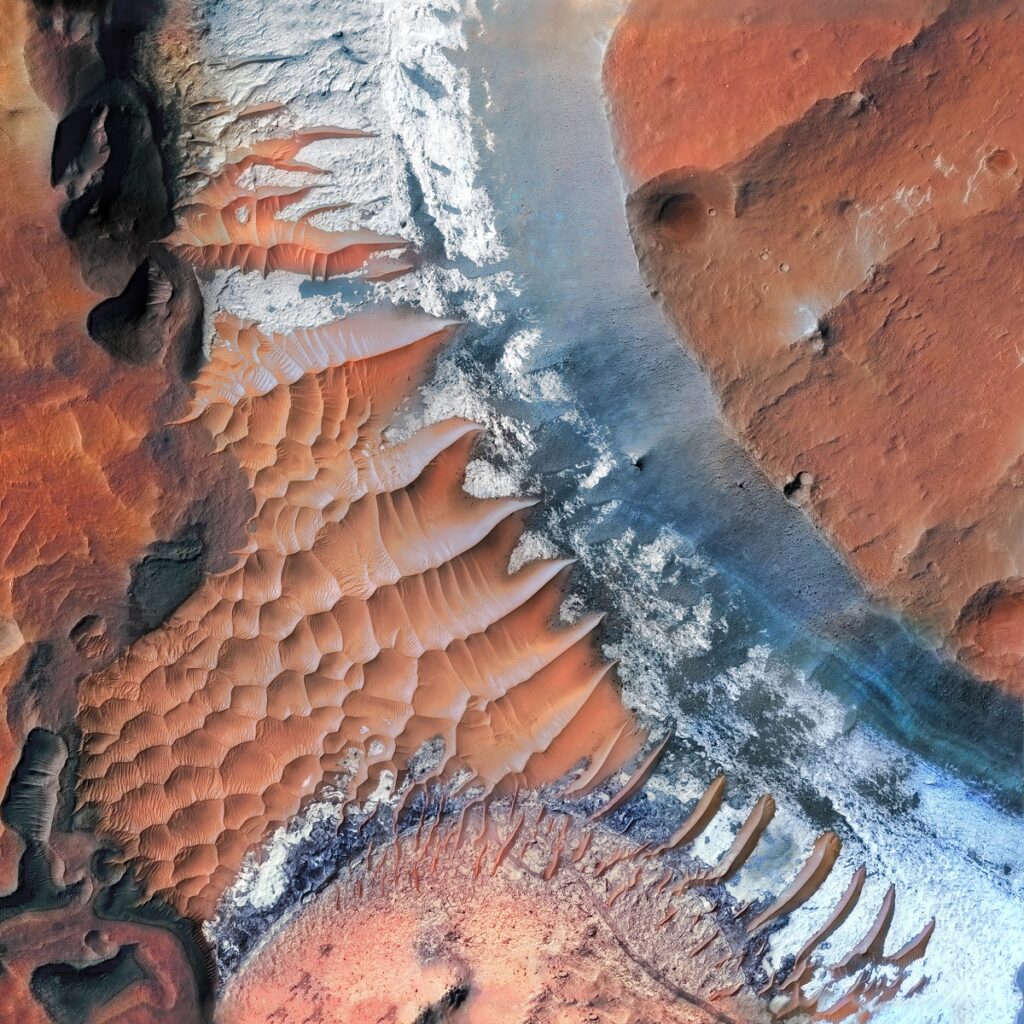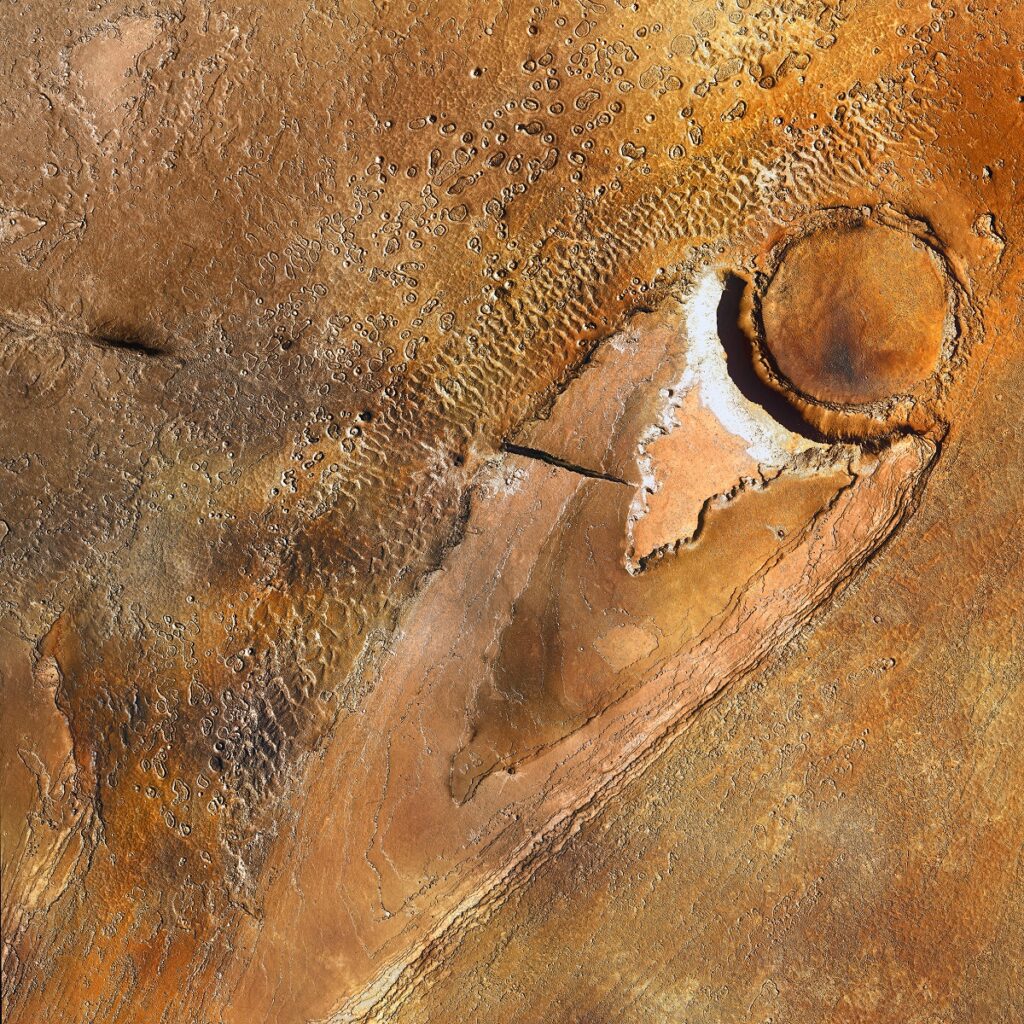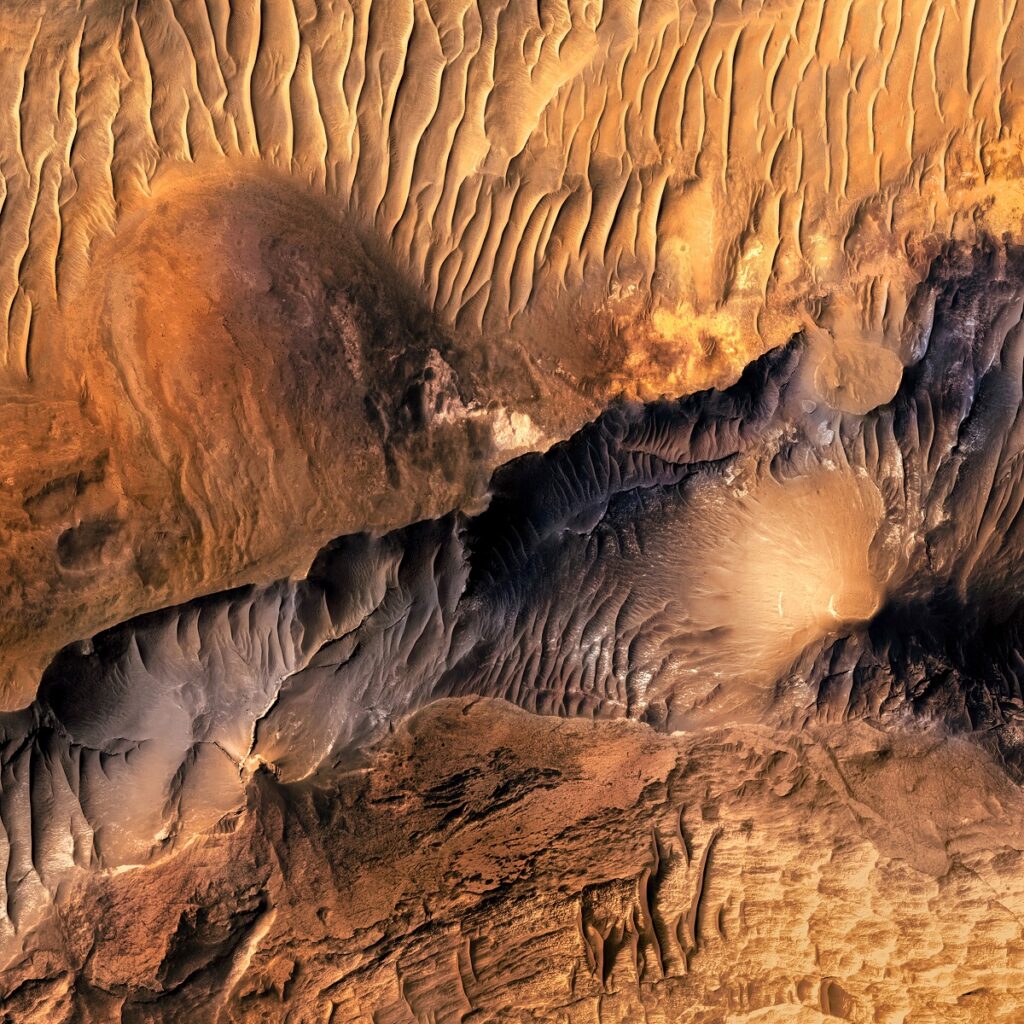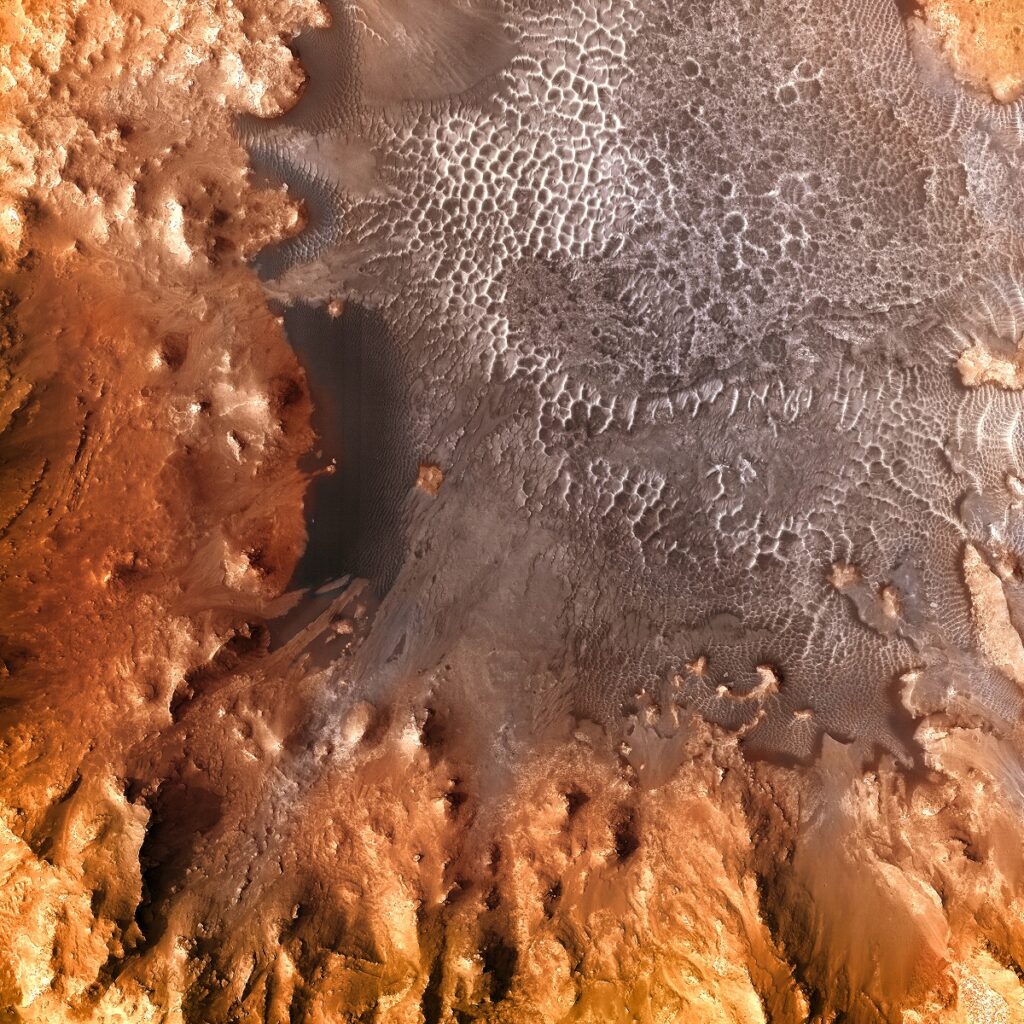Eos Chasma
Eos Chasma
We Build Custom 8K Mars Canvas Prints of Eos Chasma
Eos Chasma
Eos Chasma, a canyon that forms part of the labyrinthine Valles Marineris system on Mars, has captivated planetary scientists, astronomers, and geologists for years. Its striking geological features, combined with the data gathered from various scientific missions, provide valuable clues about Mars’ complex history.
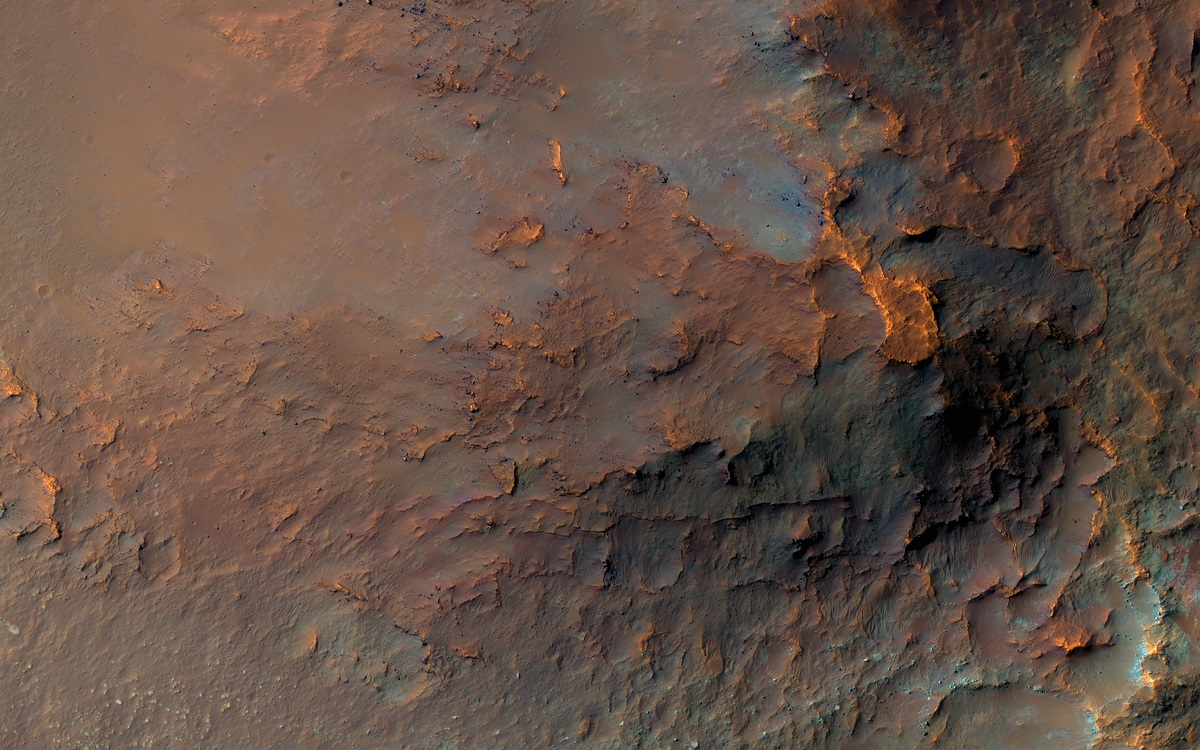 A Colorful Landslide in Eos Chasma
A Colorful Landslide in Eos Chasma
Geographical Location
Eos Chasma is a fascinating geographical feature located in the Coprates quadrangle on Mars, with coordinates situated around 12°S latitude and 310°E longitude. This captivating canyon extends for an extraordinary length of approximately 1,000 kilometers, with variable widths that range between 60 and 100 kilometers. As a significant part of the Valles Marineris canyon system—often acclaimed as the largest such system in the solar system—Eos Chasma holds a distinguished position. What sets Eos Chasma apart from the other chasms in this expansive system is a set of unique geological attributes. These individual characteristics have captured the attention of the scientific community, making the chasma a focal point for specialized scientific exploration aimed at understanding not just the history of the canyon itself, but also broader Martian geological processes.
Geological Composition
The geological complexity of Eos Chasma is staggering. Its vertical cliff walls are adorned with an array of sedimentary rock layers, each differing in mineralogical composition. Advanced spectroscopic analyses carried out by Martian orbiters have revealed a rich variety of minerals, including but not limited to sulfates, multiple types of clays, and a range of iron oxides. This mineralogical diversity points to a history of variable environmental conditions in the region. Most notably, these minerals suggest periods of water presence, making the chasma an intriguing site for studying Mars’ hydrological history. Even more captivating is the canyon floor, which unveils ancient river channels and deltas. These geomorphological features indicate that the chasma was likely subjected to water-based erosive and depositional processes in the distant past.
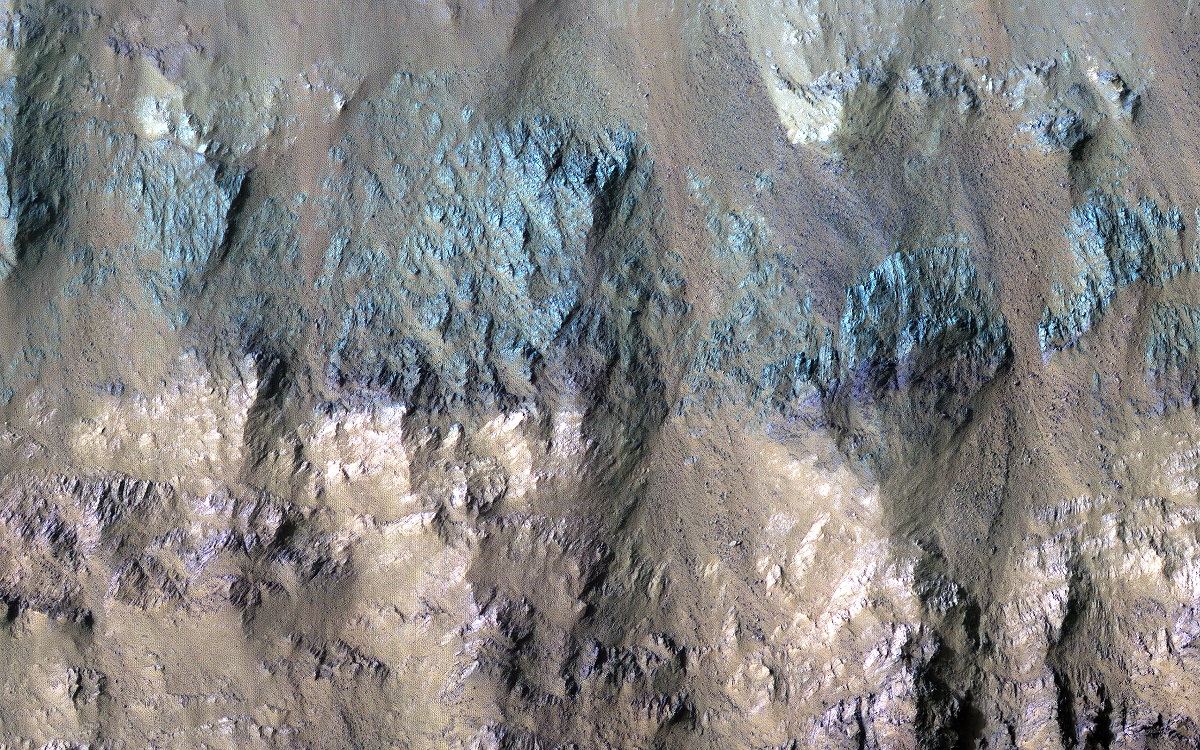 Varied Types of Rock in a Crater in Eos
Varied Types of Rock in a Crater in Eos
Significant Discoveries
Layered Deposits
One of the crowning achievements in the scientific study of Eos Chasma has been the identification of layered sedimentary deposits within the canyon walls. These stratified layers serve as a geological tapestry, allowing researchers to read the canyon’s complex environmental history. The different compositions within these layers offer invaluable clues about Mars’ geological timeline, including significant shifts in climate and water activity.
Ancient Rivers and Deltas
Equally significant was the groundbreaking discovery of ancient river channels and deltas etched into the canyon floor. These striking features offer compelling evidence that Eos Chasma was once a dynamic area with flowing water, bolstering theories that propose a wetter, perhaps even habitable, past for Mars.
Scientific Missions
Mars Reconnaissance Orbiter (MRO)
Since its launch in 2005, NASA’s Mars Reconnaissance Orbiter (MRO) has played an invaluable role in the exploration of Eos Chasma. Utilizing its advanced HiRISE camera and the CRISM spectrometer, the MRO has provided high-resolution images and detailed spectroscopic analyses that have enriched our understanding of the canyon’s varied geological features.
Mars Global Surveyor
An earlier but nonetheless critical mission, the Mars Global Surveyor, has also made significant contributions. Utilizing its Mars Orbiter Laser Altimeter (MOLA) instrument, this mission generated intricate topographical maps, which have been instrumental in shaping our understanding of the region’s geological contours.
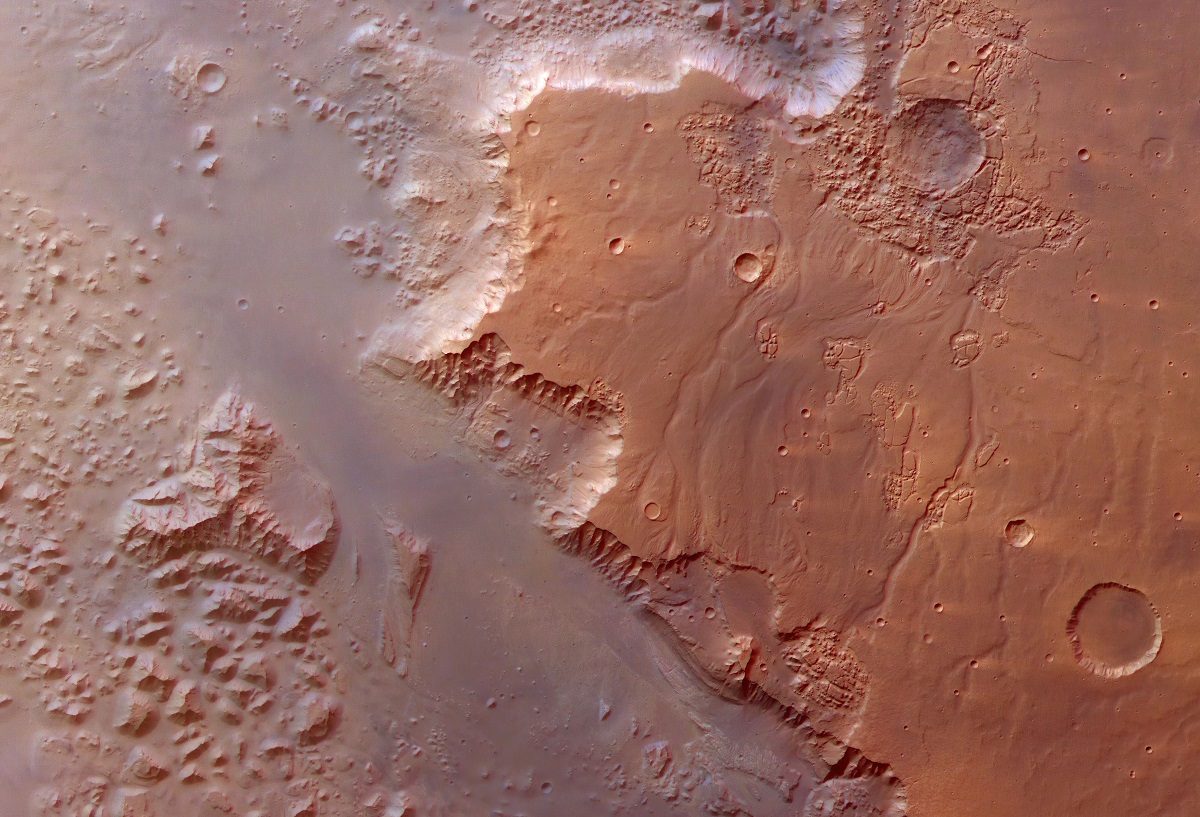 Eos Chasma-Southern Part of Valles Marineris
Eos Chasma-Southern Part of Valles Marineris
Geomorphological Features
The geomorphological aspects of Eos Chasma are nothing short of astonishing. Its intricate canyon walls feature terrains composed of various sedimentary layers, each offering unique insights into the historical environmental conditions of Mars. These stratified deposits are a treasure trove for scientists seeking to understand the planet’s geological past. On top of that, the chasma boasts an array of erosional elements such as gullies, areas susceptible to landslides, and the well-documented ancient river channels and deltas. These features strongly suggest that Eos Chasma has been subjected to a combination of aeolian (wind-based) and fluvial (water-based) erosional processes throughout its history, painting a complex picture of Martian geological activity.
Eos Chasma, as a distinct section of the larger Valles Marineris canyon system, offers a wealth of geological and geomorphological details that contribute significantly to our understanding of Martian history. The variety of minerals present and the stratigraphic evidence from sedimentary rocks offer significant clues regarding the planet’s geological and possibly hydrological history. Scientific missions like the Mars Reconnaissance Orbiter and Mars Global Surveyor have significantly enriched our knowledge about this captivating Martian feature. With its rich geological tapestry and the promise of future discoveries, Eos Chasma remains a focal point for Mars exploration and study.
Check out our 3D Mars Learning Center for more information on Mars and Eos Chasma. You can also learn more at: NASA Mars Exploration.
More About Mars
Contact us today to learn more about our 3D services and how we can help you achieve your goals.
